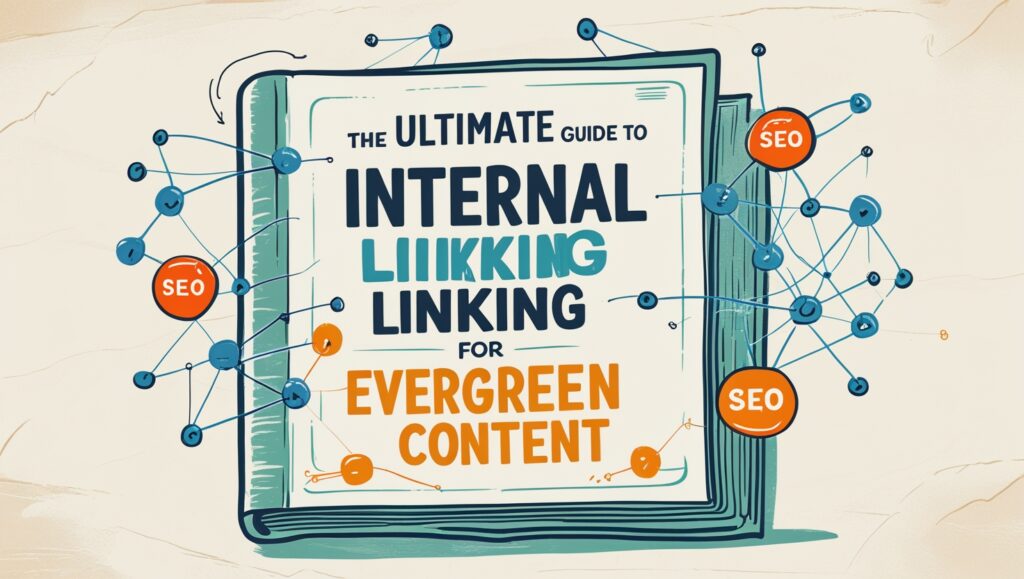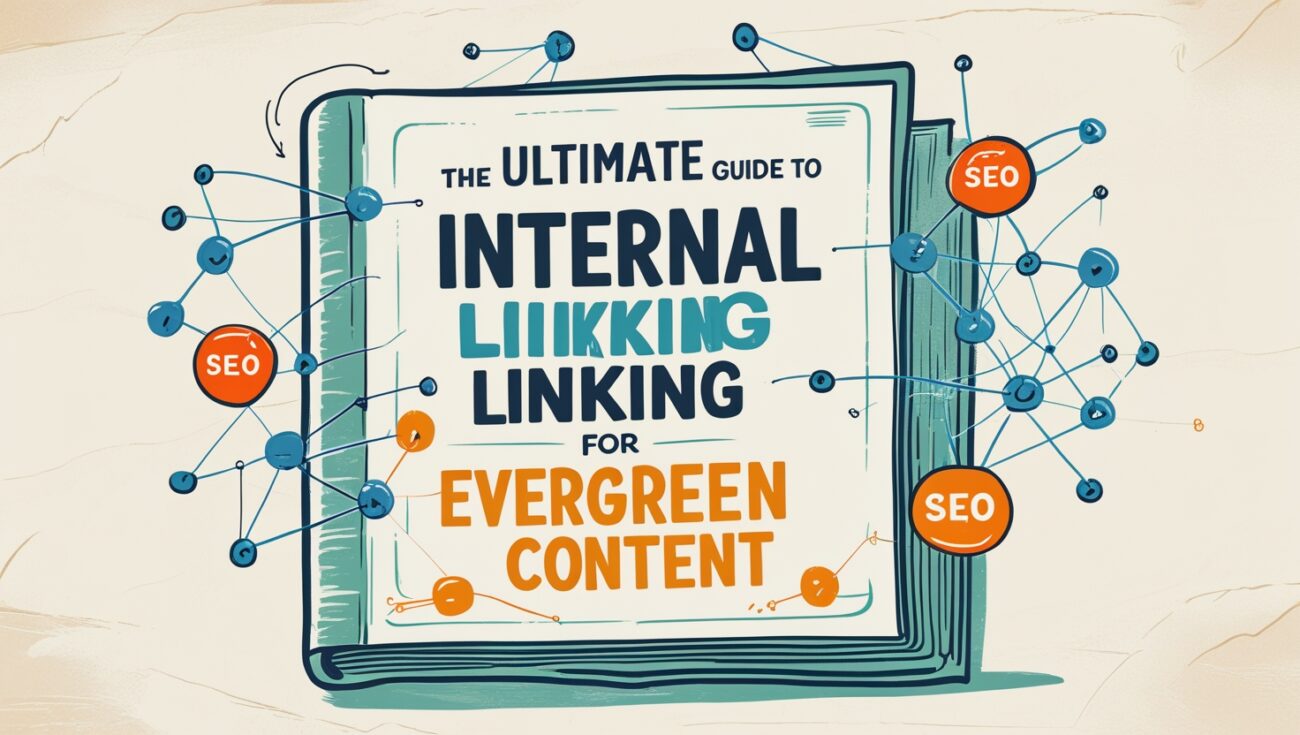The Ultimate Guide to Internal Linking for Evergreen Content
As content creators, we all dream of creating content that stands the test of time. Articles that continue to rank high in search results, year after year, bringing in a steady stream of passive organic traffic. This is the magic of evergreen content. But even the most brilliant, timeless article can eventually get buried in your site’s archives, losing visibility and authority.
This is where smart internal linking comes in. I‘ve found that a strategic internal linking plan is the ultimate tool for keeping your evergreen content fresh, relevant, and visible to both users and search engines. It’s not a one-time task; it’s a foundational strategy that breathes new life into your most valuable work. Let me walk you through my ultimate guide to using internal links to supercharge your evergreen content.

Table of Contents
The Evergreen Problem: Falling into the Archive
The biggest challenge with evergreen content is decay. As you publish new articles, your older, timeless pieces are pushed further down your homepage and category pages. They become harder for users to find and less frequently crawled by search engines. They become “orphaned pages,” valuable resources that are practically invisible.
This is a problem I‘ve struggled with myself. I would put a ton of effort into a comprehensive guide, only to see its traffic slowly diminish over time. The solution, I realized, was not to create more content, but to build a strategic network that consistently directs traffic and authority to my most important evergreen articles.
The Evergreen Solution: Strategic Internal Linking
Smart internal linking is the circulatory system of your website. It guides link authority from your high-traffic pages to your invaluable evergreen content. This process helps search engines understand the relationships between your articles and recognizes your older content as still highly relevant. It’s a powerful, on-page SEO tactic that you have full control over.
This strategy is about more than just adding random links. It’s about building a deliberate web of connections that reinforces your expertise and showcases the value of your entire content library. If you’re ready to get strategic about your internal linking, explore the powerful features of Linkbot to get started today.
Three Key Strategies for Evergreen Linking
1. Revitalizing Old Content with New Links
This is the simplest and most effective strategy. Every time I publish a new article, I make it a habit to go back to 2-3 of my older, evergreen posts and add a relevant internal link to the new content. But just as importantly, I go to 2-3 new articles and add a link back to my evergreen hubs. This constant flow of new internal links from fresh, high-traffic content to older articles revitalizes them in the eyes of search engines.
2. Creating a Topical Hub
The most effective way to manage a large amount of evergreen content is to organize it into topical hubs, or “content clusters.” This involves having a central, comprehensive pillar page (your hub) and a number of supporting articles (your spokes) that link to and from it. This signals to Google that you are a comprehensive authority on a specific topic, boosting the ranking potential of your entire cluster. An automated tool can be a lifesaver for this. Click here to see how Linkbot helps build and maintain these powerful content clusters.
3. The Power of Link Maintenance
Your internal link strategy for evergreen content is a long-term commitment. It requires ongoing maintenance. As you update articles or change URLs, you need to ensure you’re not creating a trail of broken links. Regularly auditing your site to fix these broken links and update anchor text for relevancy is a crucial part of the process. This keeps your entire evergreen content library healthy and working hard for you.
The Role of Automation
Manually implementing these strategies is incredibly time-consuming and prone to error. Imagine trying to manage a topical hub with 50 articles and remembering where all the links need to go every time you publish something new. It’s a logistical nightmare. That’s why I believe that automated internal linking software is an essential tool for any serious content creator. These tools analyze your entire site and provide intelligent, data-driven suggestions, so you don’t have to waste time doing the manual labor.
Conclusion: Making Your Content Work for You
Evergreen content is an incredible asset, but it requires a proactive strategy to maintain its value. By embracing a smart internal linking approach, you can ensure that your timeless articles continue to bring in traffic and contribute to your overall authority for years to come. It’s about building a robust, interconnected website that is a valuable resource for both your audience and search engines.
Stop letting your most valuable content get lost in the archives. Take control of your internal links and make every article an active participant in your site’s growth. If you’re ready to streamline this crucial process, you can start supercharging your evergreen content with Linkbot today.
Beyond the direct SEO benefits, a strong internal linking network for your evergreen content has a significant impact on user engagement. When a reader finishes a timely piece on a recent event, for example, and is presented with a clear, contextual link to a timeless, in-depth guide, they are more likely to stay on your site longer. This reduced bounce rate and increased time on site are powerful signals to search engines that your content is high-quality and a valuable resource for your audience.
The strategic linking of your evergreen content is a form of “link sculpting” within your own website. You’re intentionally directing the flow of authority and relevance from new, high-traffic pages to your core content, and from your pillar pages to your supporting articles. This allows you to have a deliberate, long-term plan for your content’s ranking potential, ensuring that your most important articles are always in a position of power.
By building a strong internal link profile for your evergreen content, you also help these articles rank for a wider range of long-tail keywords. When you have a comprehensive web of links pointing to and from a central guide, it signals to search engines that your content is highly relevant and authoritative, allowing it to capture traffic from more specific and less competitive search queries.
A key pillar of Google’s E-E-A-T framework is “Expertise.” Nothing showcases expertise like a well-organized library of evergreen content. Smart internal linking is the tool that makes this visible to search engines. By consistently connecting your articles on a given topic, you’re not just creating links; you’re visually demonstrating your comprehensive and authoritative knowledge on the subject, which is a key factor in building trust with both users and Google.
I‘ve found that a well-structured internal link strategy for evergreen content also makes my content calendar more effective. When I‘m planning a new post, I now immediately think about how it can connect to my existing evergreen hubs. This ensures that every new piece of content I create is part of a larger, more impactful strategy, rather than an isolated effort that gets lost in the archives.
The crawl budget of your website, especially as it grows, is a crucial factor. Evergreen content buried deep in your site with no internal links is a waste of that budget. A robust internal link network ensures that search engine bots can easily and efficiently crawl your most valuable, timeless content, ensuring it gets indexed and has a chance to rank.
A simple yet powerful tactic is to use your internal linking strategy to fix “unlinked mentions.” An automated tool can scan your entire site and identify where you’ve mentioned a piece of content (by title or key phrase) but haven’t linked to it. Turning these mentions into links is a low-effort, high-reward task that helps you consistently build authority for your evergreen content.
Don’t underestimate the importance of varied and natural anchor text. While you should use keywords in your anchor text, an over-optimized, spammy approach can hurt your rankings. A good internal linking tool helps you vary your anchor text, ensuring that your link profile looks natural and provides genuine context for your readers. This is a subtle yet crucial part of building an authoritative site that looks good to both users and search engines.
The process of building this internal link network for your evergreen content has fundamentally changed my workflow. I no longer feel like I‘m creating content in a silo. Instead, every new article is an opportunity to strengthen my existing library, and every existing article is a potential resource for my new work. It’s a holistic approach that has made my content creation process feel more intentional and strategic.
In my experience, no other on-page SEO tactic provides such a high return on investment. The time and effort you put into building a strong internal link profile for your evergreen content compounds over time, leading to a steady stream of passive organic traffic that will continue to grow for years to come. It’s the ultimate long-term growth strategy.
By making your evergreen content the centerpiece of your internal linking strategy, you are essentially turning your blog into a self-sustaining asset. Every new link from a fresh post breathes new life into an old one, and every link from an old post passes on valuable authority to a new one. It’s a virtuous cycle of growth that you are in complete control of.
Ultimately, this internal linking strategy is what will elevate your evergreen content from a series of individual articles into a powerful, interconnected knowledge hub. It’s the difference between having a handful of great posts and having a website that is a respected authority in your niche.

